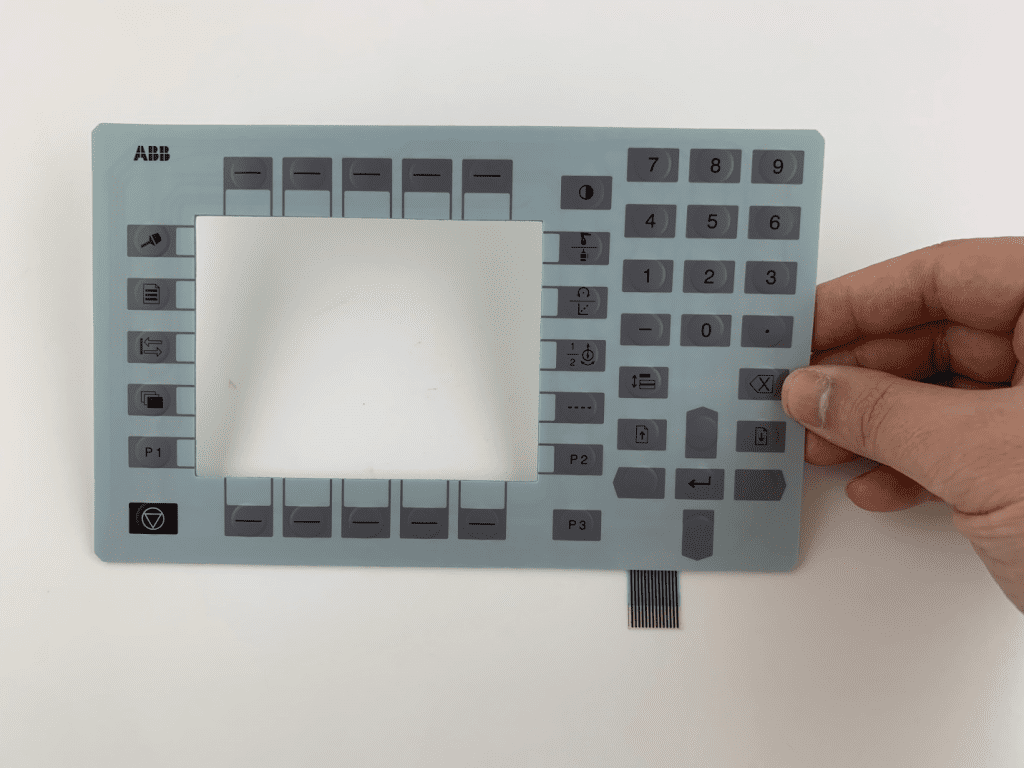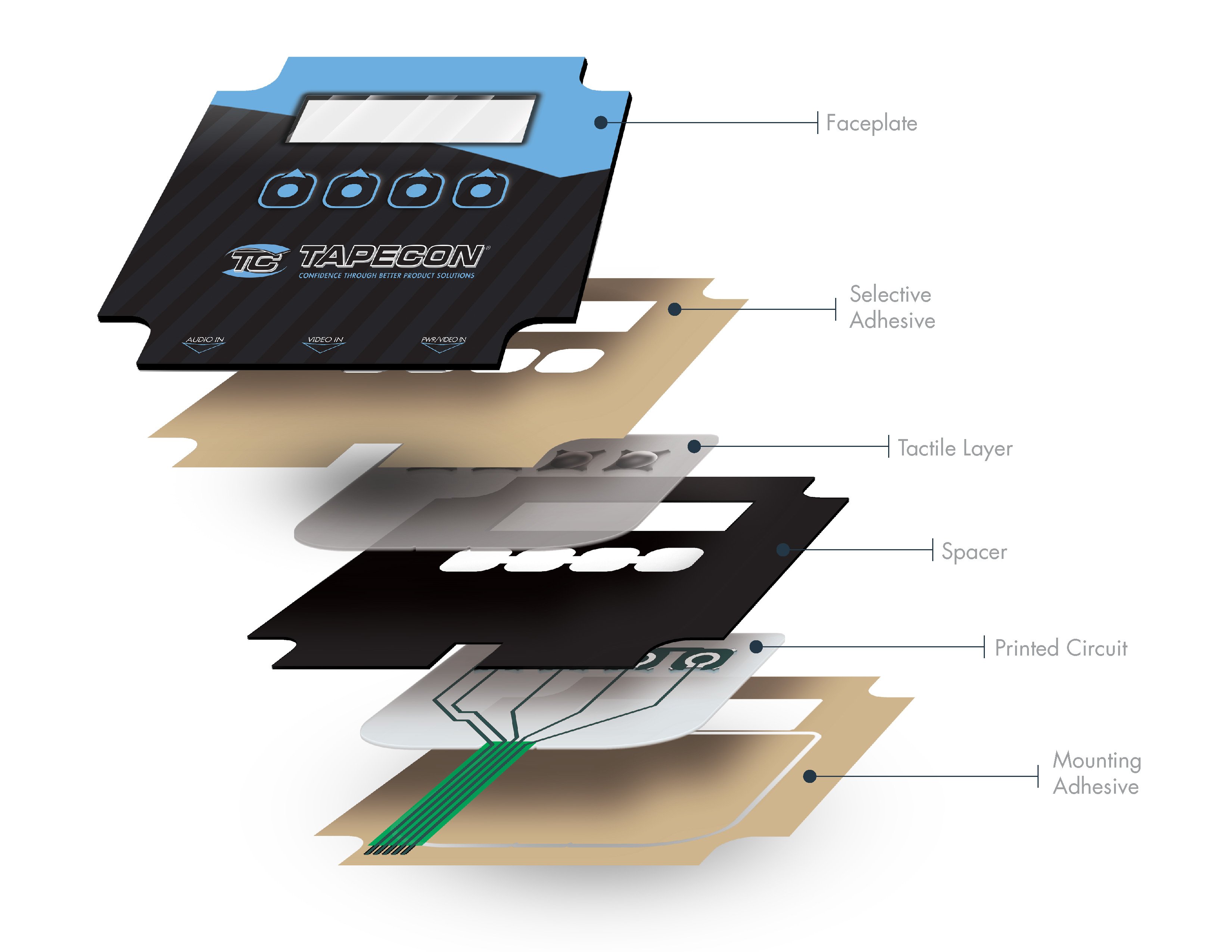Membrane Switches: A Cost-Effective Solution for Product Interfaces
Membrane Switches: A Cost-Effective Solution for Product Interfaces
Blog Article
Understanding the Relevance of Membrane Switches in User Interfaces
Membrane buttons are essential components in the style of reliable user interfaces, facilitating not just capability yet additionally enhancing aesthetic appeal and customer interaction. Their unique features, such as resistance to ecological aspects and customizable designs, make them appropriate for a varied variety of applications across numerous sectors. As we check out the numerous benefits and future fads connected with Membrane innovation, it comes to be clear that these switches are greater than simply components; they represent a convergence of innovation and usefulness. The implications of this modern technology on customer experience are worth checking out even more.
What Are Membrane Switches?

The spacer layer, which consists of glue buildings, permits the separation of the circuit layer from the overlay, ensuring that the switch remains in a non-activated state until pushed. When stress is put on the overlay, it presses the spacer layer, connecting the space and finishing the circuit in the underlying layer. This design not just lowers the physical room needed for conventional mechanical switches however also improves the sturdiness of the tool, as Membrane switches are usually immune to dirt, dampness, and various other environmental aspects.
Frequently found in applications varying from consumer electronics to clinical devices, Membrane buttons are integral to contemporary technology, supplying a easy to use and efficient user interface that straightens with contemporary design needs.
Advantages of Membrane Buttons
While numerous button modern technologies exist, Membrane Switches deal unique advantages that make them especially preferable in numerous applications. Among the primary benefits of Membrane switches is their portable design, which allows for space-saving implementations in tools where realty is limited. Their thin profile not only improves aesthetic allure however likewise helps with lightweight construction.
Another substantial advantage is their resistance to ecological factors. Membrane buttons are commonly secured against moisture, dirt, and contaminants, making them perfect for usage in demanding environments, such as medical devices and commercial tools. This longevity extends the life-span of the switch, minimizing maintenance expenses and boosting reliability.
Moreover, Membrane buttons can be customized to fulfill certain layout requirements, integrating special graphics and colors that improve individual interaction. Their tactile feedback options can also be customized to provide a rewarding user experience. Additionally, Membrane switches are cost-efficient, especially in high-volume applications, as they can be produced efficiently.
Applications in Different Industries

In the consumer electronics market, Membrane switches prevail in gadgets such as microwaves, washing makers, and remotes. Their tactile responses and visual options enhance customer experience while supplying a sleek, modern-day appearance. Furthermore, automobile manufacturers make use of Membrane buttons in dashboard controls and infomercial systems, where area is restricted, and customer engagement is critical.
Additionally, the industrial industry leverages Membrane switches in control panels for machinery and devices, enabling intuitive operation in often harsh environments. Their resistance to chemicals and dampness guarantees durability and integrity in these applications. Overall, the adaptability of Membrane Switches contributes dramatically to their widespread use, making them indispensable in different technical domains.
Style Considerations for Membrane Buttons

When creating Membrane buttons, several key factors to consider need to be taken right into account to guarantee optimal capability and user experience. To start with, the choice of products is critical; choosing resilient, premium substrates can boost the button's longevity and resistance to ecological elements such as dampness and temperature level changes.
Second of all, the design of the graphic overlay ought to prioritize clearness and simplicity of use. Icons and text have to be clear, and the format needs to promote user-friendly communication (membrane switches). Furthermore, responsive comments is essential; incorporating a tactile dome or various other mechanisms can enhance the individual experience by giving physical verification of activation
One more crucial element is the button's electrical performance. Developers must make certain that the conductive traces are appropriately created to reduce resistance and prevent signal interference. This includes examining the called for actuation pressure and making certain compatibility with the electronic parts they will certainly interface with.

Future Trends in Membrane Technology
As modern technology proceeds to development, Membrane switches are positioned to advance considerably, driven by innovations in products and making techniques. One arising trend is the incorporation of sophisticated materials, such as conductive inks and versatile substratums, which boost toughness and minimize the total weight of Membrane switches. These materials not just improve the responsive action but additionally enable the design of switches that can endure harsher ecological problems.
Furthermore, the integration of touch-sensitive modern technologies is changing traditional Membrane Switches into his explanation more interactive customer interfaces. Capacitive touch sensing units installed within Membrane switch panels can supply an extra receptive and instinctive individual experience, lining up with the expanding need for smooth, modern-day layouts in consumer electronics.
In addition, improvements in printing strategies, such as electronic and 3D printing, make it possible for quick prototyping and customization of Membrane switches. This flexibility enables producers to respond extra swiftly to market demands and consumer preferences.
Lastly, sustainability is ending up being a substantial emphasis, with suppliers exploring green products and processes. As these fads unravel, the future of Membrane technology guarantees improved functionality, visual appeal, and ecological duty, strengthening their function in sophisticated interface across numerous industries.
Verdict
In verdict, Membrane Switches represent an essential element in the design of user interfaces, combining performance with visual versatility. As developments in modern technology continue, the advancement of Membrane buttons is expected to additional fine-tune individual interfaces, driving advancement and improving use in an increasingly intricate technological landscape.
Membrane buttons are integral elements in the design of efficient user interfaces, promoting not just performance however additionally enhancing visual appeal and customer interaction.Membrane Switches serve as a crucial component in various individual interfaces, promoting a seamless communication between customers and digital gadgets.While numerous switch technologies exist, Membrane Switches offer unique benefits visit that make them especially desirable in numerous applications.Additionally, Membrane buttons can be customized to fulfill particular style needs, incorporating one-of-a-kind graphics and colors that improve user communication.In verdict, Membrane Switches represent a crucial part in the layout of customer interfaces, incorporating capability with aesthetic adaptability.
Report this page